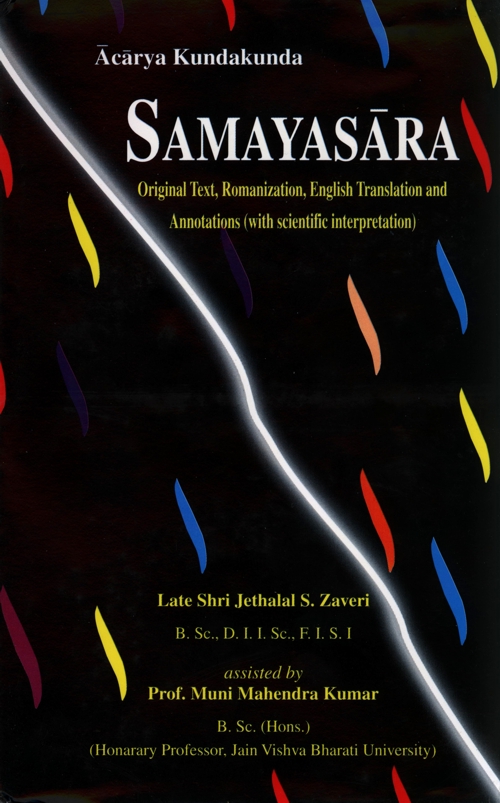
eyattaṇicchayagado samao savvattha suṃdaro loe.
baṃdhakahā eyatte teṇa visaṃvādiṇī hodi.. 3
(Eyatta-ṇichhaya-gado) one who has attained the transcendental harmony (samao) i.e., the pure soul (loge) in the entire cosmos (savvattha) everywhere and always (suṃdaro) shines with glory (teṇa) that is why (baṃdhakahā) the talk of defilement with another (hodi) is (visaṃvādiṇī) loathsome.
Annotations:
Anything in the cosmos which is befouled/polluted by a foreign substance loses its purity and magnificence. The word 'samaya' means pure self and hence applies to each of the six eternal cosmic substances, But here, since, we are talking about jīva (the conscious substance), samaya means pure (uncontaminated) soul.
It is admitted that purity and perfection is integral to the soul and realization of the same is not a new creation but just getting rid of the impurity caused by the presence of a foreign element. Perversion or pollution is always disgusting while purity which is the absence of pollution is forever beautiful. The ugliness is introduced on the scene by the association of the soul with the aforementioned karma which is a foreign substance pudgala. As soon as the soul withdraws itself from the lure of this substance and becomes enraptured by its own characteristic qualities viz., jñāna, darśana etc., it shines with infinite glory. Similarly each of the other cosmic substances viz., dharmāstikāya etc. are also beautiful in their pure state.

sudaparicidāṇubhūdā savvassa vi kāmabho gabaṃdhakahā.
eyattassuvalaṃbho ṇavari ṇa sulaho vibhattassa.. 4
(Kāma-bhoga-bandha-kahā) The story of sensuous pleasures, carnal desires and attachments (suda-paricidāṇubhūdā) has been heard, is familiar and has been enjoyed (savvassa vi) by all of us (ṇavari) only (uvalaṃbho) approach to (vihattassa) that which is free from attachment (to such pleasures) (eyattassa) and which extols the self alone (ṇa) is not (sulaho) easily available.
Annotations:
From eternity, the soul has been bogged down into the quagmire of passions and is oblivious of itself (own splendour and glory). Or it has been wandering in the wilderness hankering after the sensous pleasures derived from the foreign substance—pudgala. The worldly existence is sustained by the perverted attitude and nourished by the desire/longing for sensuous pleasures. The soul has developed attraction and attachment to the non-self in the form of the body and senses and is deluded into thinking that its happiness and well-being are concomitant with those of the body and the senses. Moreover to continue its delusion the soul has always been presented with a scenario of material attachment and it is well versed and has extremely intimate knowledge of ways and means of satisfying the sensuous pleasures and carnal desires. There has never been any occasion to listen to the subject of its pure-uncontami-nated-nature because talks on such subject are very scarce indeed.
The word kāma refers to the pleasures derived from the senses of touch and taste while the term bhoga indicates those derived through the senses of smell, sight and hearing. The verse emphasizes one's intimacy with the indulgence in material pleasures and utter scarcity of either the teachers or the text on the subject of the separateness of the soul from matter.
The use of three words suda, paricida and aṇubhūda is significant. Suda refers to knowledge (jñāna) paricida to world-view (darśana) and aṇubhūda to conduct (cāritra). The three terms signify the unholy trinity of perverted knowledge perverted world-view and perverted conduct, which prevents self-realisation.
 Jethalal S. Zaveri
Jethalal S. Zaveri
 Prof. Muni Mahendra Kumar
Prof. Muni Mahendra Kumar

